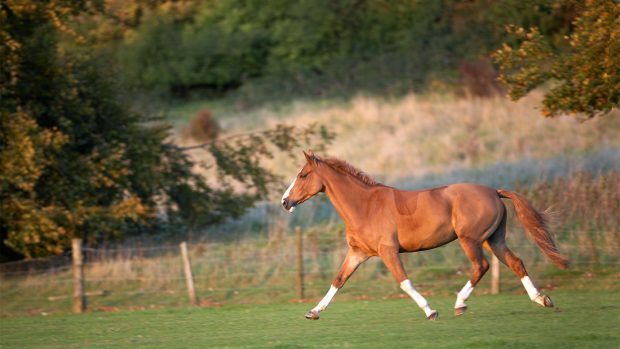The hock is a complicated structure, transmitting the powerhouse of the large muscle mass of the hindquarters to the ground. It contains some of the most important joints in a horse and is liable to particular stress injuries.
It is made up of two parts:
- The hock joint proper which provides nearly all the movement and flexion in the area.
- The multi-boned spavin area which is made up of “building blocks” of bones bound together with strong ligaments. The bones below in the spavin are compressed on impact and absorb the stress.
Hock pain does not necessarily result in a change in the gait under normal conditions, but flexion of the leg will often produce increased lameness. A nerve block is often used to confirm that the hock is the site of the problem.
Conditions of the hock
Bone spavin or tarsal osteoarthritis is the disease of most concern in horses of all ages and types. Spavin is caused by osteoarthritis of the two joints that have little mobility, below the hock joint proper (tibiotarsalarticulation).
The type of conformation said to increase the likelihood of problems is:
- Cow hock which when looked at from behind are too close together
- Sickle hock where the hock makes a more acute angle than usual and there isan absence of a second thigh.
Treatment can include non-steroidal, anti-inflammatory drugs, long periods of rest and surgical shoeing.
Bog spavin is swelling of the hock joint proper with extra joint fluid. Although it can be the result of traumatic injury and accompanied by lameness, it is usually seen with no lameness. .
There is also the condition known as osteochondritis dessicans (OCD) . This can cause swelling with lameness, but in cases not connected with a kick or injury. When OCD is diagnosed with X-rays, surgical treatment to remove bone fragments is commonly performed.
Curbs are swellings at the back of the hock and another condition that can be caused by poor hock conformation. Treatment is restand perhaps the application of anti-inflammatory or blistering creams.
Thoroughpin/deep flexor tendon problems are the swellings at the back of, and above the point of the hock, often mistaken with the swelling of the bog spavin. Again, lameness is only seen during formation. Treatment is initial rest unless severe.
Capped hocks are swellings of the point of hock caused by trauma such as banging against a wall or fence or too little bedding. Early anti-inflammatory treatmentcan help but they can be difficult to treat and are a blemish for life.
Blood spavin is normal and is only a large vein running over the inside of the hock.


